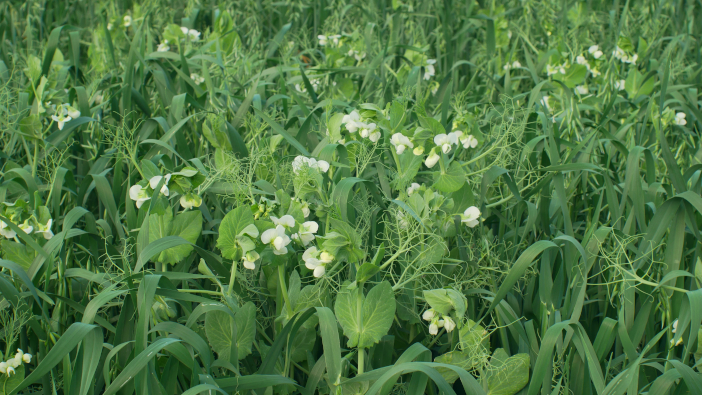Following two difficult seasons in which soils have taken a lot of damage and remedial action has been required in many cases, Agrovista states that cover crops can play a key part in repairing the damage but must be managed appropriately to achieve the desired outcome.
This is particularly true on heavy land, where two of the biggest challenges can be the optimum establishment and effective destruction.
Nial Atkinson, Agrovista’s farming systems research and development adviser, said: “By following a few guidelines, growers will greatly increase the chances of growing an effective cover, regardless of soil type, weather, or species.”
Timely establishment
It may seem obvious, but the timing of the establishment is critical. Even a few days’ delay in sowing can adversely affect a cover crops performance, Mr Atkinson said.
“Plants need to harvest as much sunlight as possible, as quickly as possible.
“A short-term cover crop planted ahead of an autumn-sown cereal may only be in the ground for two months, and time is also of the essence for an over-wintered cover as growth slows during the late autumn and winter.”
It is also important to consider the state of the seedbed. Ideally, cover crops should be sown soon after the combine has left the field, but not at the expense of seedbed quality.
Straw management
However, the first steps to establishing a cover crop needed to be taken before the preceding crop is harvested. The straw chopper should be set to produce a fine chop that spreads across the full combine width.
“There will be little time for crop residue to break down before the cover crop is drilled and no stale seedbed cultivations to aid the process,” said Mr Atkinson.
Cultivations
Assessing the soil structure and the need for remedial cultivations should be next. If yields in the preceding crop were good and even across the field, and steps were taken to minimise traffic and soil damage, then there should be no problems.

Suspect areas will warrant closer inspection with a spade, however. “Recent weather means many soil types could still be wet at depth which, if loosened too deeply, could cause more harm than good, but still incur all the cost.
Sowing the cover crop
Cover crops can be established in several ways, including direct drilling. Where required, very shallow cultivation, either in a separate pass or during drilling should be sufficient to mix in the straw and mineralise some nitrogen to kick start growth.
“Work at Agrovista’s flagship heavy land research site, Lamport AgX, has consistently shown that shallow low-disturbance loosening at 100-125mm together with plant roots has been far more beneficial than deep loosening alone, as well as being more cost-effective.”
Cover crop mixtures often consist of seeds of varying sizes that require differing sowing depths. “Modern drills can often deal with this, while older equipment that suits larger seeds will benefit from the addition of a small seeds application kit,” said Mr Atkinson.
“After drilling, the seed-bed can be rolled as necessary – soil moisture conservation is important throughout this process.”
Agrovista is also investigating broadcasting cover crop seed into the preceding crop several weeks before harvest, working to pinpoint timings and species.
Effective destruction
The timing of cover crop destruction is closely linked to several factors, including land type, cover crop bulk and most importantly the carbon:nitrogen ratio.
“Where covers with higher C:N ratio such as cereals and brassicas are grown, especially on heavy land, it is vital to apply glyphosate early, December or January if possible, so plant material has time to break down to release nutrients and benefit soil biology,” said Mr Atkinson.
Early destruction also allows the soil surface to dry and improve drill performance, whilst minimising the green bridge risk. Work at Lamport has shown a yield advantage in spring wheat when preceding black-oat based cover crop was sprayed off in late December/early January, compared with two weeks pre-drilling.
| Early Destruction | Later Destruction | No Cover Crop | |
| 2015 | 10.30 | 9.12 | 9.59 |
| 2016 | 8.65 | 7.75 | 6.01 |
| 2017 | 8.60 | 7.31 | 7.35 |
In practice, a second application may be needed in bulky cover crops to ensure a complete kill before drilling.
“Most drills, with some adjustment, will comb through reasonable amounts of cover crop residue provided it remains anchored to the roots,” said Mr Atkinson. “It is best to avoid surface cultivations before drilling.
“Where covers consist of lower C:N ratios, such as vetch, early destruction is less important, especially on lighter land.
“Growers who own specialist drills that work in a standing cover crop can spray just before or just after sowing the following crop.”


